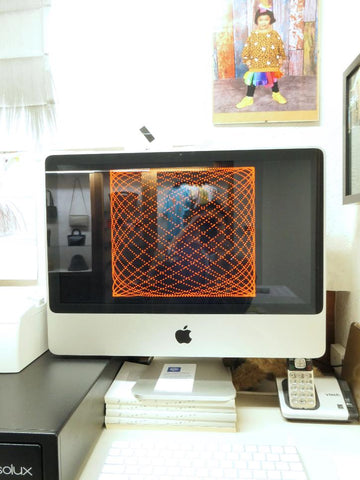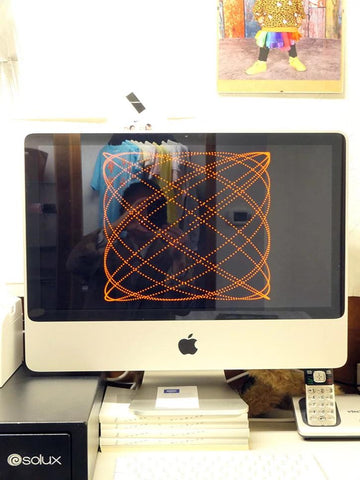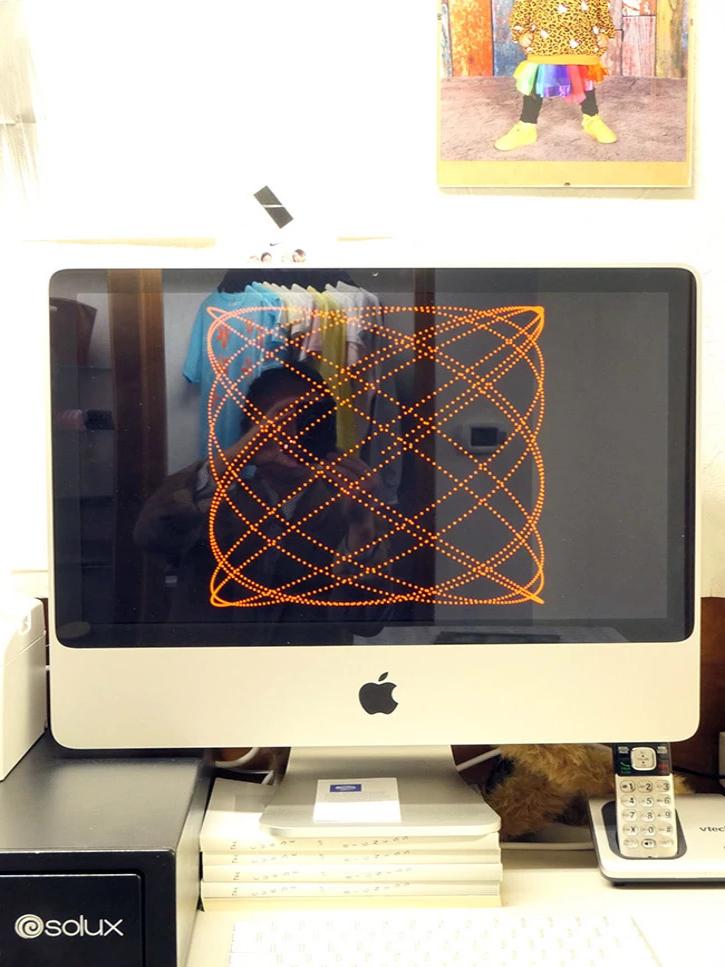O-R-G: After His Beautiful Machine of 1855 by David Reinfurt
NB: Please note this is a digital product. Once your order is processed, you will be emailed a PDF with install instructions. Should you desire hard mailing, please include the instruction with your order.
******
Two signals of varying frequency and phase result in a perpetual infinity, drawing and redrawing over and over. The familiar shapes are called Lissajous curves after mathematician Jules Antoine Lissajous and his “beautiful machine” of 1855.
Devised to draw a picture of two superimposed systems falling into and out of phase, the machine was constructed from a pair of tuning forks placed at right angles, each with a mirror attached. A light source is focused through a lens, bouncing off the first onto the second and projecting to a large screen. As the tuning forks are struck, simple vibrations move the mirrors in a regular oscillating pattern. The projected image forms the strange and beautiful curves of a Lissajous figure.
(Text courtesy O-R-G.)






